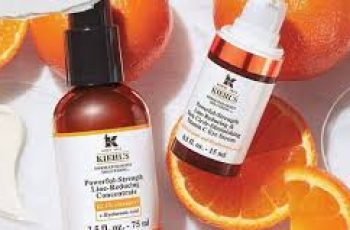
Maltese Cross Pattern in Moisturizers
The maltese cross pattern can be used to find the best barrier repair moisturizers to strengthen the skin barrier.[1] The maltese cross pattern is seen under a cross polarized microscope and represents lipids that are packed together in the optimal orthorhombic structure that makes the strongest skin barrier.
When formulated properly, eczema creams, moisturizers for dry skin and barrier repair moisturizers will display this characteristic pattern. However, many moisturizers do not display this pattern. When choosing a barrier repair moisturizer, try to find one that has the maltese cross pattern when viewed under a cross polarized microscope. This guide will explain the meaning of the maltese cross pattern and why the maltese cross pattern is important in moisturizing creams.
Before buying an moisturizer, make sure you are shopping for moisturizers using your Baumann Skin Type. Moisturizers can do more than just repairing the skin barrier. Find one that targets all of your barriers to skin health.
Take the Quiz
Where do we see the Maltese Cross pattern?
The maltese cross pattern may be seen under a cross polarized microscope in:
Barrier repair moisturizers
Face creams, body creams, and hand creams
Moisturizing skin creams
Eczema creams
Healthy human skin
Tape stripping from normal skin
undefined
Why is the maltese cross pattern important for the skin barrier?
To understand the maltese cross pattern, you need to know about the skin barrier. Click here to learn what the skin barrier is.
Healthy Skin Barrier
The skin barrier is composed of layers of lipids (fat) that surround keratinocyte skin cells in the upper layer of the epidermis called the stratum corneum. These lipid layers form the skin barrier. This barrier prevents exit of water from the skin and entry of allergens, irritants, and microbes into the skin.
The skin lipids that are represented by the blue head and yellow tails in the illustrations are:
Ceramides
Fatty acids
Cholesterol
In normal healthy skin, these 3 types of skin lipids[2] are present in a 1:1:1 ratio and are arranged in an orthorhombic pattern.
The maltese cross pattern is seen in healthy skin with a strong protective skin barrier when viewed under a cross polarized microscope.
Unhealthy Skin Barrier
In unhealthy skin such as inflamed skin or eczema[4], the skin lipids are arranged in either hexagonal or liquid crystalline patterns.* (see below to learn about these patterns)
What is the maltese cross pattern as seen with a cross polarized microscope?
When you look at mages of moisturizers under a cross polarized microscope, it is easy to see the maltese cross pattern. But what are you seeing? Why does the skin barrier make this structure?
When lipids line up in an orthorhombic pattern, this is the most stable lipid formation. The light from the cross polarized microscope shines through a X polarizer and a Y polarizer and gives the maltese cross pattern.
The orthorhombic pattern looks like a maltese cross when cross polarized light is used to view the lipid bilayers (lamella) with a cross polarized microscope.
The orthorhombic orientation of lipids in the skin makes the barrier stronger because the lipids can pack in closer together. The orthorhombic pattern is the best orientation and infrastructure of lipids to make a strong skin barrier. A strong skin barrier helps prevent water evaporation off of the skin and block entry of substances into the skin.[3]
Why is it important that a moisturizer display a maltese cross pattern?
In order for a barrier repair moisturizer to work well, the lipids in it must mimic the natural structure of the lipids in the skin.
Think of skin lipids as puzzle pieces that must come together perfectly so they can pack together with the minimal amount of space between them. If there is space between lipids, this allows water to evaporate off of the skin- leaving it dehydrated.
Optimal barrier repair moisturizers contain lipids that are the same shape and structure as those found in the stratum corneum layer of normal skin.[5]
The best barrier repair moisturizers to treat dry skin and eczema have a maltese cross pattern when viewed with a cross polarized microscope.
What does a normal skin barrier look like under a microscope?
How a healthy normal skin barrier looks under a microscope depends upon the type of microscope used:
Regular microscope- the stratum corneum skin cells can be seen
Electron microscope- multiple lamellar layers are seen
Cross-polarized microscope- displays demonstrates optical anisotrophy in a maltese cross pattern
What is the maltese cross pattern in skin and skin creams?
A strong skin barrier demonstrates optical anisotropy in a maltese cross pattern. The maltese cross pattern is light seen when a particular spacial distribution of particles is viewed with a crosspolarized microscope.
Science of the Lipid Structure of the Skin Barrier
The skin barrier is composed of lipids- mainly ceramides, fatty acids and cholesterol. These lipids can be structured in 3 main patterns:
Orthorhombic (OR)
Hexagonal (HEX)
Liquid crystalline (LIQ)
The orthorhombic pattern is the most tightly packed and conformationally ordered pattern.[6] This orthorhombic lipid structure forms the strongest skin barrier pattern because the lipids can pack together tightly preventing movement of water and irritants across the lipid lamella.
Patients with skin diseases such as eczema that have defective skin barriers show a hexagonal pattern rather than an orthorhombic pattern of lipids. [7] The type of fatty acids and the ratio of fatty acids, cholesterol and ceramides affects the structure of the bilayer lipid membranes.
So the goal of developing a strong barrier repair moisturizer is to use the proper 1:1:1 ratio of lipids and a formula that forms a orthorhombic pattern.
Which moisturizers display a maltese cross pattern?
To see images of best-selling moisturizers under a cross polarized microscope, click here.
These moisturizers display the maltese cross pattern:
The Zerafite brand has 4 moisturizers with maltese cross pattern
Medature PSL Repair Moisturizer
To find out if you need a barrier repair moisturizer shop by your Baumann Skin Type.


